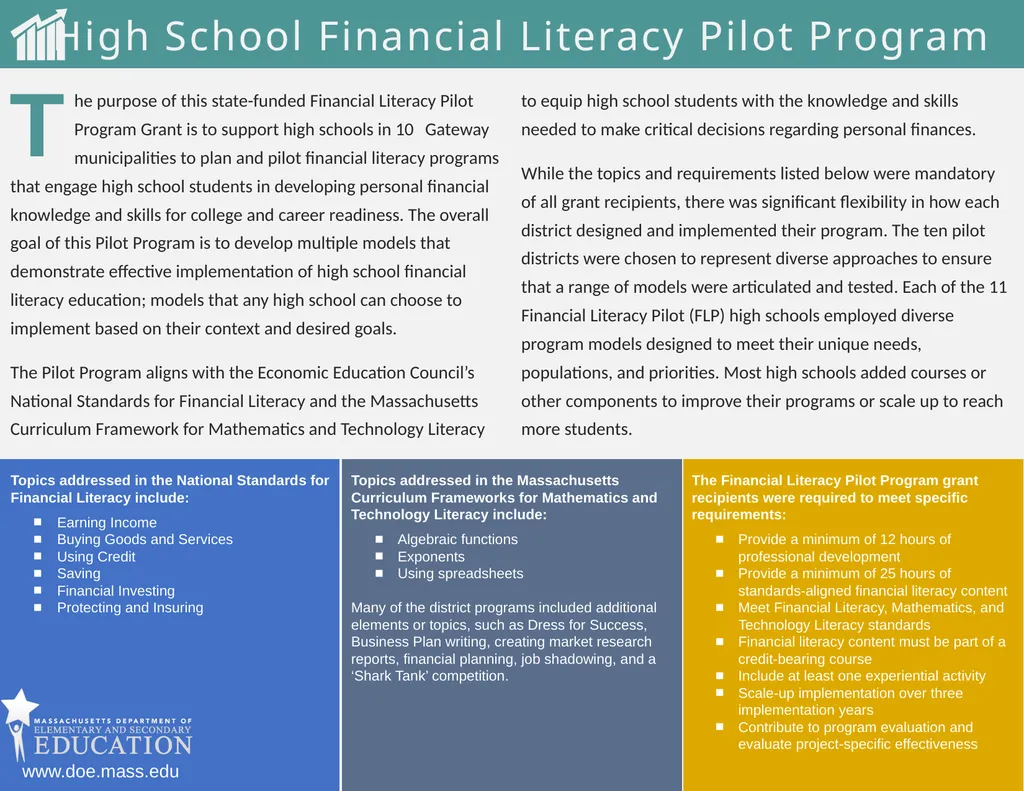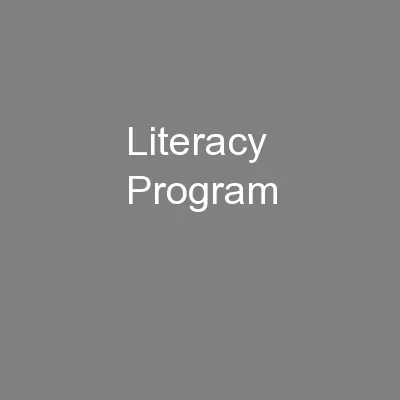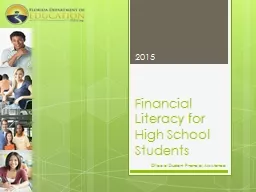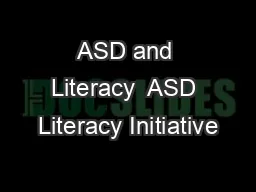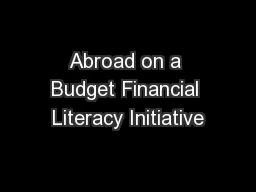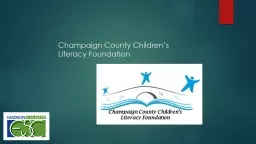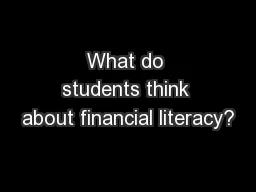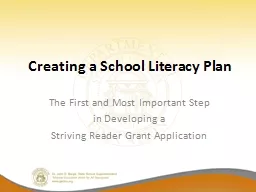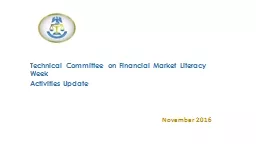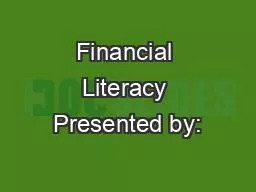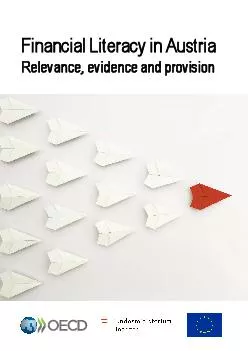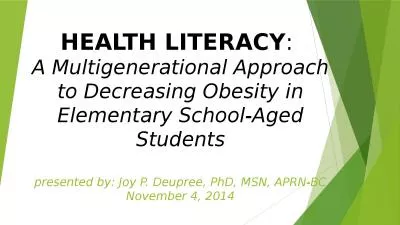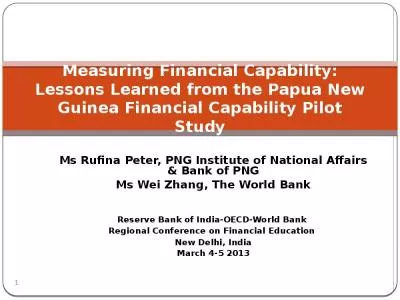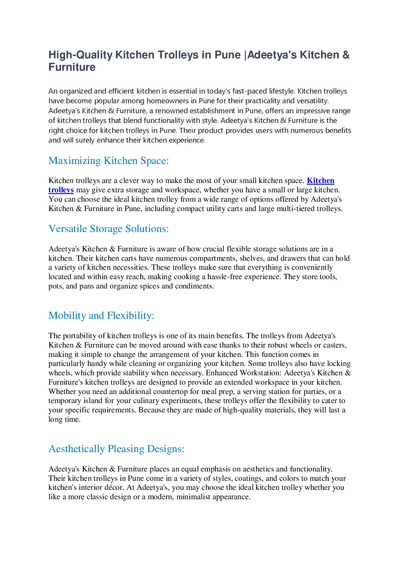High School Financial Literacy Pilot Program he
Author : alexa-scheidler | Published Date : 2025-06-23
Description: High School Financial Literacy Pilot Program he purpose of this statefunded Financial Literacy Pilot Program Grant is to support high schools in 10 Gateway municipalities to plan and pilot financial literacy programs that engage high
Presentation Embed Code
Download Presentation
Download
Presentation The PPT/PDF document
"High School Financial Literacy Pilot Program he" is the property of its rightful owner.
Permission is granted to download and print the materials on this website for personal, non-commercial use only,
and to display it on your personal computer provided you do not modify the materials and that you retain all
copyright notices contained in the materials. By downloading content from our website, you accept the terms of
this agreement.
Transcript:High School Financial Literacy Pilot Program he:
High School Financial Literacy Pilot Program he purpose of this state-funded Financial Literacy Pilot Program Grant is to support high schools in 10 Gateway municipalities to plan and pilot financial literacy programs that engage high school students in developing personal financial knowledge and skills for college and career readiness. The overall goal of this Pilot Program is to develop multiple models that demonstrate effective implementation of high school financial literacy education; models that any high school can choose to implement based on their context and desired goals. The Pilot Program aligns with the Economic Education Council’s National Standards for Financial Literacy and the Massachusetts Curriculum Framework for Mathematics and Technology Literacy to equip high school students with the knowledge and skills needed to make critical decisions regarding personal finances. While the topics and requirements listed below were mandatory of all grant recipients, there was significant flexibility in how each district designed and implemented their program. The ten pilot districts were chosen to represent diverse approaches to ensure that a range of models were articulated and tested. Each of the 11 Financial Literacy Pilot (FLP) high schools employed diverse program models designed to meet their unique needs, populations, and priorities. Most high schools added courses or other components to improve their programs or scale up to reach more students. Topics addressed in the National Standards for Financial Literacy include: Earning Income Buying Goods and Services Using Credit Saving Financial Investing Protecting and Insuring Topics addressed in the Massachusetts Curriculum Frameworks for Mathematics and Technology Literacy include: Algebraic functions Exponents Using spreadsheets Many of the district programs included additional elements or topics, such as Dress for Success, Business Plan writing, creating market research reports, financial planning, job shadowing, and a ‘Shark Tank’ competition. The Financial Literacy Pilot Program grant recipients were required to meet specific requirements: Provide a minimum of 12 hours of professional development Provide a minimum of 25 hours of standards-aligned financial literacy content Meet Financial Literacy, Mathematics, and Technology Literacy standards Financial literacy content must be part of a credit-bearing course Include at least one experiential activity Scale-up implementation over three implementation years Contribute to program evaluation and evaluate project-specific effectiveness www.doe.mass.edu T High School Financial Literacy Pilot Program * Represents 100% of targeted population. Fall River – BMC Durfee High School District Required Course(s): None Elective Course(s): Durfee 21st Century Community Learning Center (grades 9-12) Experiential: Activity: Online/App
